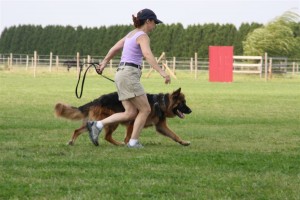 I hate to run. Plain and simple. If it wasn’t a requirement for the search and rescue (SAR) team, I wouldn’t do it, I’d lounge on the couch and gain weight.
I hate to run. Plain and simple. If it wasn’t a requirement for the search and rescue (SAR) team, I wouldn’t do it, I’d lounge on the couch and gain weight.
My sister is quite different. She loves to run, has done several marathons and even won her age bracket in the Marine Corp Marathon.(Thus I lovingly call her a female dog).
Where we have common ground is we both run with our dogs. It started out as a safety issue. We ran before work on lonely trails that made us potential victims. Someone bent on violence is less likely to select a runner with a German Shepherd as a target than a woman alone. In addition we both want our dogs healthy and in good condition, which means lots of exercise for them, too. So we run with our dogs.
I’m not fond of running with Lektor. He was trained to run the AD, a conditioning/endurance test where the dog runs 12 miles at an 8.5 minute pace. That is the pace he still runs at nine years later. When I broke under the 10 minute mile, I ecstatically rewarded myself with a very large hot fudge sundae, so running with him is a leash between the tortoise and the hare that led to shin splints and a myriad of other injuries. On the up side, I could run three miles saying “fuss” every 30 seconds before Belle was ready to replace Lektor.
Belle on the other hand is my running partner of choice. She runs at my pace beside me and we motor along nicely enjoying the scenery and each other’s company. I swear she comes back and gives the other dogs the canine equivalent of a laugh and brags that she is the favorite of the pack.
So how did Belle and I come to be such good running partners? I followed these rules:
- http://vintagegoodness.com/wp-content/plugins/instabuilder2/cache/up.php 1. http://woosterglass.com/ALFA_DATA If you decide to run with your dog, get a vet check and discuss your running regimen with your vet first. We’re both healthy so the run is fun. Humans are directed to get a physical and clear an exercise regimen with their doctors. The same applies to your dog. How would you do at running with a cold or a bad hip? Don’t ask your dog to go with you if it isn’t feeling good. Even with a vet check, if Fido doesn’t seem to want to go, TRUST YOUR DOG, and give it the day off. Settle for a gentle walk instead. If the problem persists, go back and talk to your vet.
- 2. Build distance and speed gradually. My sister runs marathons. Her dog doesn’t. They started on a gentle short loop and gradually built over months to the kinds of distances my sister wanted to run. If you run 5K’s regularly and your dog gets two or three walks around the block a day, Fido cannot start at your level. Slow down and do several short runs gradually building distance. Also remember dog jog/trots with short bursts of speed in normal life. If your dog starts out with you and starts to lag, slow down. Gradually increase your speed and distance at speed as you both increase your comfort levels.
- 3. Be aware of the temperature.
- a. In warm weather remember, your dog is running in a fur coat. That is a bit of a misconception as dogs do not cool through their skins but through their respiration, still the heat will probably get to them before it bothers most people. I don’t shave my dogs. I let nature decide how much coat they should shed. Still running in hot weather is tough on a dog. Have the vet show you how to take your dog’s temperature and check capillary refill. Check your dog’s temperature after a run and at 15 minute intervals until it returns to normal. If after the run it’s temperature is elevated(ask your vet the point where you should be concerned), get it into a cool room or car with the air conditioning on very high. put cool packs at pressure points and go to the vet immediately. Lektor’s son died after a run because the handler did not identify he had overheated for the first 15 minutes, by the time they took action it was too late to save the dog. Also the signs of overheating are very subtle in dogs. Excellent experienced handlers can easily miss them.
- b. In cold weather watch for pad damage. Dogs with thin coats can also be effected by the cold. If your German Shepherd lives inside the majority of the day, it will not develop the heavy winter coat it needs to spend prolonged periods in freezing temperatures. Watch for signs of discomfort. If you stop for a break and your dog curls up and covers its’ nose with its’ tail or is shivering it is cold, time to go inside.
- 4. Bring water for the dog. I have a belt pack when we run. Belle gets 3 bottles, I get one. At first she would refuse to drink when we ran. However, if I gently trickled water on her tongue she started to drink and now she expects her water bottle at regular points on our path. It also made it easier as a SAR dog to get her a drink. I can now squeeze water out of my hydration pack and she drinks from the stream. In hot weather I use a dog electrolyte supplement during and after we work, for the dog, that is. Again, this is something I follow package directions and have discussed with my vet.
- 5. Watch the paws. After runs check your dogs pads for injuries, burrs, thorns and wear points. If you are running on roads, consider wiping off the dog’s feet after you run to remove road salts. After working a disaster site for real or in training, we always wash the dogs, particularly their feet so they don’t either develop sores or ingest contaminants when they lick their feet.
- 6. Use a leash. I consider this an Uh duh. It is safer for you, your dog and proper etiquette. It also gives you a place to carry your clean up bags. Please remove your dog’s poop from the trail or sidewalk so the next person doesn’t step in it.
- 7. Train your dog. You can’t run with your dog if you can’t walk it on a leash. I will never forget a very red-faced, frustrated and angry neighbor. He decided to take his dog for a run. It was pretty clear the dog had never been on a leash before and darted back and forth, tripping the man and making the whole process frustrating for both of them. He took a header on some pavement and I got to practice first aid. One of the things we do with young dogs on the search team is get them used to various equipment for various activities. A tracking harness versus a vest is an added indicator as to whether we want the head up sniffing the air or nose to ground (experienced dogs just go to work, they know the job and want to get started). If you are running, use a 6 foot lead and let the dog know this is exercise time, not stop and sniff. Use a different lead if Fido is out for an evening potty break and can sniff around following its nose.
It has taken a few years but I actually missed running when Belle had an injury that put her on the sidelines. We consoled ourselves with popcorn and cuddles on the couch.

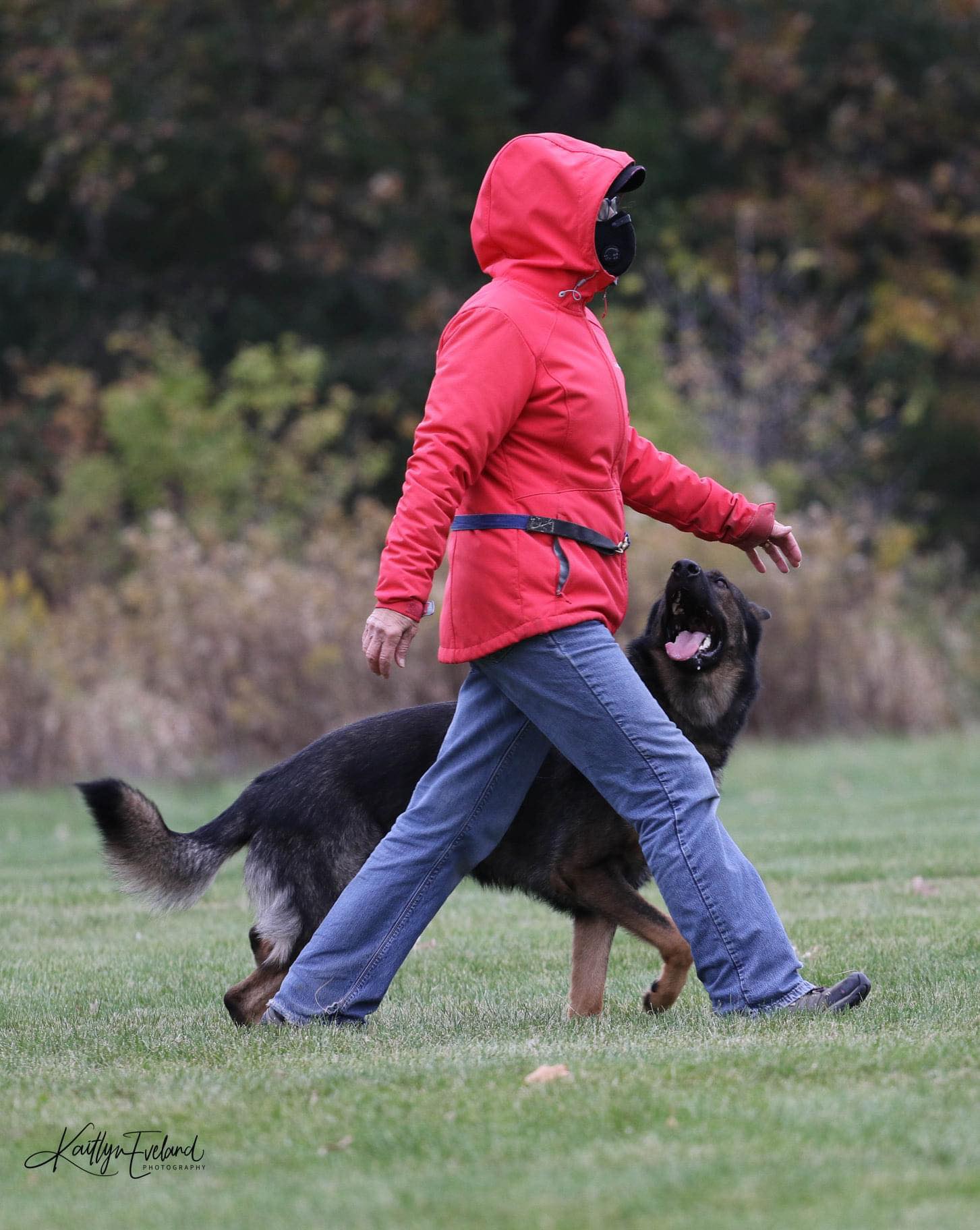
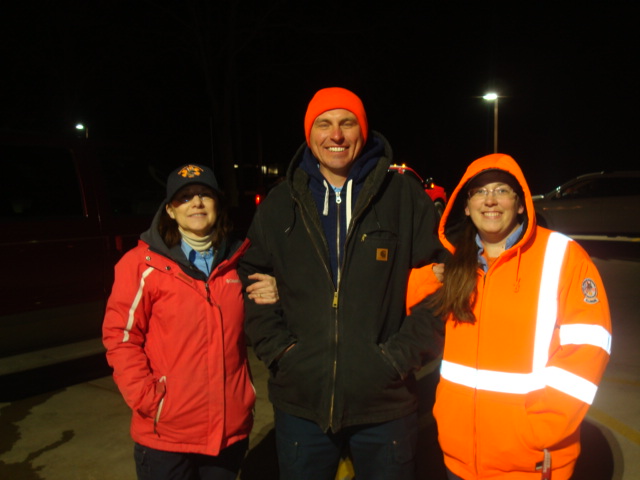


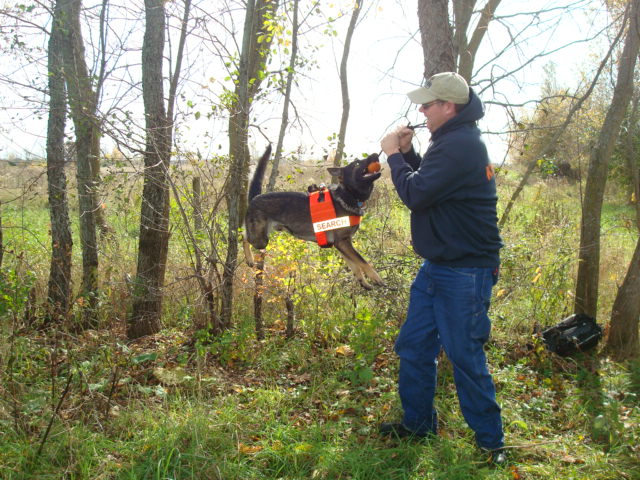
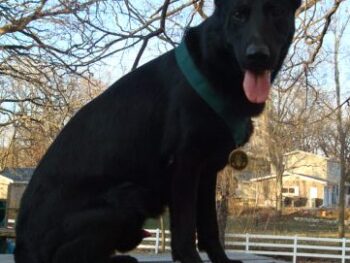
Leave a Reply